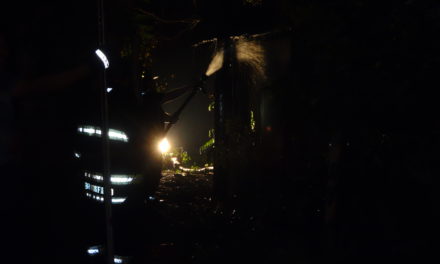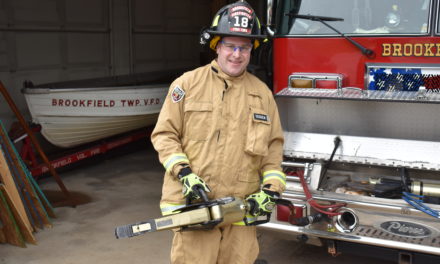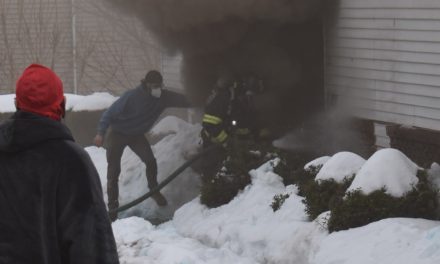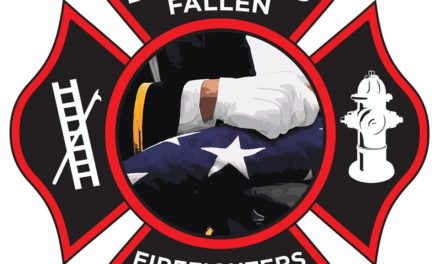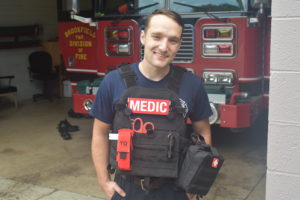
Brookfield firefighter Kyle Stern wears a bullet-proof vest the department recently bought with a state grant.
It’s standard practice for police officers to wear bullet-proof vests, but there will be occasions when
firefighters also will wear them.
The Brookfield Fire Department, using an Ohio Department of Public Safety grant, recently bought nine vests, two to be placed on each of the four ambulances, and one for the chief.
Department funds were used to stock the vests with medical emergency equipment such as bandages, tourniquets, flashlights, chest decompression kits and chest seals, said Fire Chief David Masirovits.
The vests would be worn if department personnel respond to an active shooter situation, a standoff or
other violent or potentially violent situations.
“With limited manpower nowadays, fire departments, we’re going to be going in with the police, or
shortly thereafter,” Masirovits said. “We’ll be moving into harm’s way. Not that this is the cure-all, but it
definitely would protect our members and give them a sense of protection in the event they’re faced with
something like that.”
The vests are heavier than those worn by police officers, which are designed for all-day wear, and the
equipment they carry in pockets and pouches are all that the responding firefighters – all of whom are
trained in emergency medical response – will have with them. The idea is to get in, quickly stabilize the
patient, and get out, said firefighter Kyle Stern.
“It’s more of an immediate life-saving technique,” Masirovits said. “If we can tell you to get up and walk,
you’re gonna get up and walk and go. If we tell you to stay there or you can’t move, then we will treat the
most severe of the wounds that we can and move on to the next person.”
Masirovits said he is working with Trumbull Memorial Hospital on a donation of additional vest kits that
are designed to be used by first responders to treat themselves in the case of injury.
“If I’m wearing the vest and I get shot and I’m out of supplies, I will have a kit in reserve to take care of
myself until one of our teammates can get to me and get me out of there, or whatever the case may be,”
Masirovits said.
The vests also come with “drag handles” so a firefighter can be dragged out of a dangerous situation if
they become injured, Stern said.
Some department members have undergone training that deals with these kinds of situations and teaches
techniques such as one-handed tourniquet application, said Capt. James Williamson.

